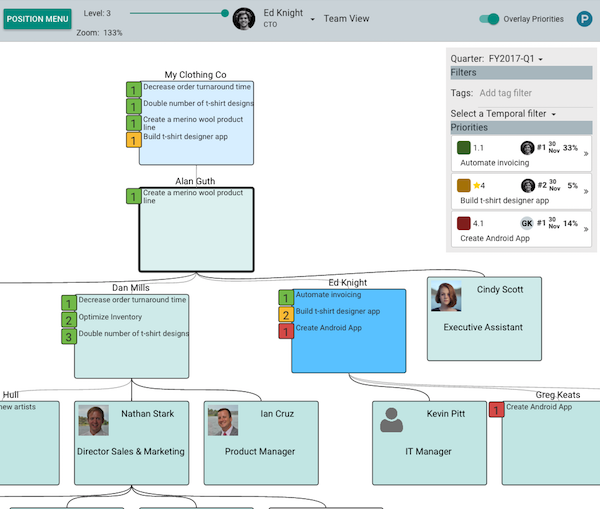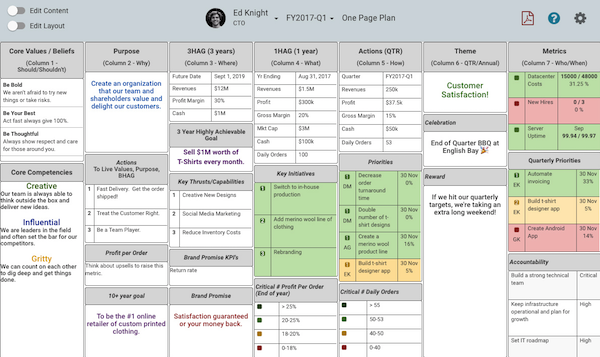Tick… tick… tick… the sound of a metronome is very familiar to musicians. They use them to improve their timing, especially the ability to stick to a regular tempo. And it’s this emphasis on rhythm and repetition that inspired the name of our preferred scaling up software – Metronome Growth Systems (MGS).
Rhythm is central to growing your business. Don’t underestimate its importance. By creating regular rhythms, you’ll make a massive difference to the day-to-day functioning of your business. Introduce them early on and they’ll maintain momentum as you start to grow. They’ll also optimise business efficiency, working like compound interest for your company and ensuring an unparalleled growth trajectory.
But ensuring new rhythms are properly embedded takes sustained effort and consistent application. They won’t happen overnight. That’s why we recommend MGS to all our clients. It supports and mirrors the whole process of scaling up. Over the years, we’ve seen its value to our clients increase and we now include it automatically as part of our onboarding process.
What is Metronome Growth Systems (MGS)?
The story starts with Shannon Susko, who built and led two Canadian software companies, Subserveo and Paradata Systems. The toolset she used to scale these businesses were Verne Harnish’s Rockefeller Habits, from an execution perspective, combined with Michael Porter’s strategy tools. After she sold her second company, she became a coach and authored two books, ‘The Metronome Effect’ and ‘The 3HAG Way’. The creation of 3HAG (meaning Three Year Highly Achievable Goal) led to a certification programme which, for me, provided the missing pieces of the scaling up jigsaw. It gave me a solid framework that I can share with clients. The access to strategy tools, particularly the company positioning piece, really helps with niche definition and core customer.
In all her books, Shannon talks about rhythms and the importance of habit-building. After feeling frustrated that there wasn’t an app or software that helped with this, she took the dev team from her last company and put them to work. The result was MGS.
Introducing and using MGS

MGS works best when there’s someone in your team who owns it. They can then integrate it into your business routine and iron out any kinks. Time and again, the companies who make the most progress amongst our clients are the ones who embrace it most thoroughly. It’s particularly effective on the execution side of their businesses because it reinforces good habits.
The software doesn’t interface with anything else – it’s completely standalone. It’s not linked to your financial plan, which is often backwards-looking, with your finance team reporting month end retrospectively. MGS looks forwards. It’s where you put your rolling objectives – maybe signing ten new customers this quarter or hitting £100K of net new monthly recurring revenue. And it’s where you track the metrics linked to these.
Some business coaches charge extra for MGS. Not us. We decided early on that it needed to be included as part of our coaching package. Every quarter, we invite our clients to two-day off sites to check on progress with their OKRs and KPIs. Carlos, our accountability coach, delivers training on the software and monitors usage. Our license allows every team member in the client’s business to use it, which we encourage. We even run our own MGS championship every month as an incentive! Incremental points are given when people use different elements of the software. We aim to ensure MGS is deeply embedded in business as usual.
Ensuring total transparency
Honesty and transparency are vital to successful businesses. I often talk about the need for radical candour, a phrase coined by Kim Scott in her book of the same name. Creating a direct, open culture where people can speak their minds without fear of judgement can be transformational. You’ll move faster and grow quicker with way less organisational drag and bureaucracy holding you back.
MGS helps to build this culture through complete transparency. Every team member can log in and see everyone else’s objectives – all the way up to the CEO. This encourages accountability. The knowledge that everyone is relying on you to meet your commitments.
Getting your team into proper habits

Great image, eh? It always gets a giggle when we show this at our workshops. To prevent terrible teeth, you need to brush them every day. Sure, it takes a long time for them to decay if you don’t do this. But decay, they will. Similarly, if you want to get strong, you don’t lift weights once or twice. You need to commit to a regular daily routine, gradually increasing the weights and lifting them little and often until you get results.
The very fact of having a piece of software that needs to be regularly updated helps to get your team into proper habits. It forces them to think carefully about the way objectives are worded and how they will measure success at each stage. Decisions have to be made about the areas you want to focus on, whether you’ve taken on too much and how you’re going to track it each week. Your team is creating a behavioural framework of accountability to each other – and this commitment can be hugely valuable.
Embedding regular rhythms
Yes, I know. I’m always banging on about rhythms. Sometimes I feel like a stuck record! But a predictable and well-conceived rhythm establishes a culture of consistency and execution throughout your whole organisation – like a beating heart.
We recommend daily huddles, weekly Level 10s and monthly All-Hands to our clients to accelerate their progress. MGS provides the perfect place to capture all the inputs and outputs of these meetings – whether they’re daily metrics, scorecard reviews, stucks or actions that have rolled over.
Providing a virtual war room for your strategy

At the very least, MGS should be a central place for your One Page Strategic Plan, listing your BHAG, Purpose and Values alongside annual and quarterly company priorities. This is where all the material for your War Room is stored. Pre-Covid, this would have been flip-charts and post-it notes, but in the ‘new normal’ you can create a virtual War Room in MGS using Mural links showing all your collaborations.
Just like Churchill’s War Room in the Second World War, MGS provides a central place where everyone can track progress and review whether they’re on course. Here you can capture all your rolling metrics, financial goals, and the main products or services that will drive your revenue over time.
Linking everything together

The beauty of MGS is the way it links everything together. There should be a clear line of sight from the company’s 3HAG (Highly Achievable Goal) through annual, quarterly and team objectives to individual ones, quarter by quarter. Each of these will have a series of key results, priorities and action items.
When we get together with clients every quarter, we always include the CEO business review. The business leader spends ten minutes summarising where they’re at. And the only tool they’re allowed to use to comment on business performance is the One Page Strategic Plan. The best thing about the 1PSP is how easily it can be shared in All Hands meetings and its clarity to rolling out OKRs. It enables each team member to see a direct connection between their individual objectives through to the company’s purpose and BHAG. If they can’t see this, then it’s likely that their objectives are wrong.
As you’d expect from software designed by Shannon Susko, all the 3HAG tools can be captured and linked together in MGS – attribution mapping, the functional accountability chart, key process flow map, the quote to cash process, swimlanes, scorecards and KPIs. Everything knits tightly to ensure your strategy stays on course.
Giving a framework for performance reviews
And finally, it’s worth saying that MGS provides an effective alternative to traditional annual appraisals systems. Anyone who’s read my blogs for a while will know how much I hate appraisals! Ditch them in favour of quarterly performance reviews.
Each role in your team should have a job scorecard laid out in MGS, which can be used as the basis of your review framework. It helps identify the top three to five activities that add value to the business. Track these as a regular part of your daily huddles so that employees can see how they’ve moved the needle forward in a positive way at the end of each day. This is the only area of MGS locked down for confidentiality, so they’re only viewable by the individual concerned and their manager.
Written by business coach and leadership coaching expert Dominic Monkhouse. Contact him to schedule a call here. You can order your free copy of his book, Mind Your F**king Business here.

